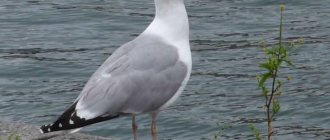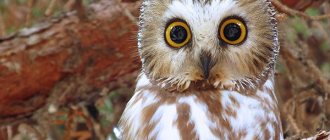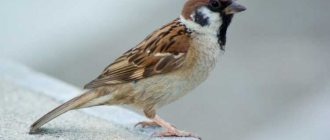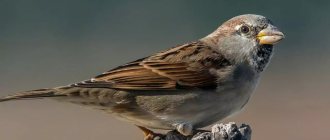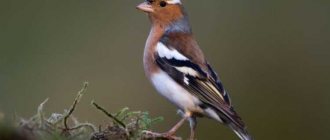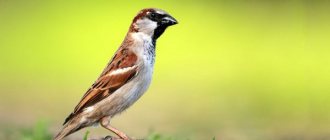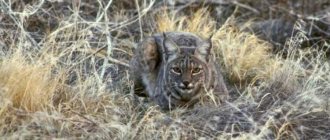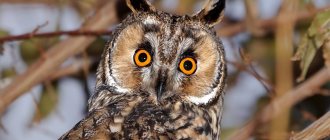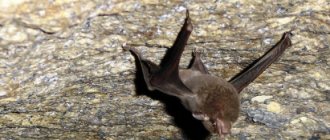This beautiful bird can sit in one place for quite a long time, practically without moving, as if it was thinking about something. For all her caution and wildness, she is gifted with good mental abilities, intelligence and courage. With all this, this bird often causes significant damage to gardeners, sometimes even completely destroying the crop. Its name is grosbeak.
The article provides information about this not very familiar species of birds. What does the grosbeak bird eat, what kind of life does it lead, what interesting facts are associated with it? The article provides answers to these and other questions related to this bird.
Spreading
The habitat of the grosbeak covers the territories of North Africa and Northern India, Europe and Asia (temperate latitudes). He prefers to settle in deciduous forests. They are especially good for this bird if there are wild or cultivated gardens with fruit and berry plantings nearby.
At the same time, the grosbeak can thrive in groves, parks, and other mixed forests. They can be found even in forests.
Below is a more detailed description of the grosbeak bird.
Characteristics
Grosbeaks belong to the genus of birds of the finch family. In size they are no larger than starlings. Their physique is dense and their head is large. The bird is similar in some ways to the starling, differing only in its shorter body size.
A distinctive feature of grosbeaks is the shape of their beak. It is massive and thick, has a conical shape and imperceptibly merges with the forehead. The relatively small grosbeak bird with a slightly shortened tail has a body length of up to 19 centimeters. Its weight ranges from 40 to 65 grams, its wingspan reaches 33 centimeters.
Plumage color
The color of the feathers of these birds is extremely beautiful. It is varied in its shades. There are chocolate, pink, black, light brown and other colors, and they can change throughout the year, especially in spring. This feature applies mostly to males. Their forehead, back of the head and crown are light brown. The neck is gray-pink, the shoulders are chestnut-brown, and the rump is olive-brown. The ventral part of the body, flight feathers, the strip around the beak, and the chin are colored wine-gray, and the bridle and tail are black.
Females have duller shades of feathers. Young birds are even more inconspicuous. A distinctive feature of the latter is the gray-yellow underside of the body with transverse dark mottled specks.
Kinds
The grosbeak genus is represented by three species.
The common grosbeak usually lives in parks, gardens, deciduous and mixed forests of Eurasia, with the exception of the northeastern part of the mainland, as well as the countries of Scandinavia and central Russia. It prefers to settle in groves and oak forests, as well as in plantings located next to human habitation. The common grosbeak lives in Siberia, Crimea, the Caucasus and Alaska. It migrates to countries with warmer climatic conditions, reaching Turkey, Algeria and Morocco.
Other species of these birds include the evening and hooded grosbeaks, whose colors combine bright yellow, white and black. These two varieties are quite closely related. Their habitat is the American continent, but the hooded grosbeak prefers its central part, and the evening grosbeak prefers the northern part.
Common grosbeak: keeping at home
Its distribution area is quite wide. It covers vast territories from the British Isles to Japan itself. But these birds are rarely found in the northern and northeastern territories. This means that you can hardly find them in Scandinavian countries.
This is a very beautiful bird. The plumage of the male is brownish-brown, with a reddish tint. There is a beautiful gray-orange “scarf” on the neck. A white stripe runs down its black wings, and its black tail has a white tip. The color of the beak can change: in winter - fawn, the rest of the year - bluish-gray. Like most birds, the female grosbeak is not so beautiful. It looks duller, and there is a transverse pattern on the side of the body and on the head.
This variety can be kept at home. Their beautiful and unusual coloring attracts the attention of bird lovers. The lifespan of a grosbeak living in a cage is quite long, and it tames relatively quickly. A spacious cage is required to keep it. Housing made of wooden rods is unacceptable for this bird, as it can easily bite through them with its powerful beak. They always need access to clean, fresh water.
Diet of domestic grosbeaks:
- flax and oat seeds;
- sunflower seeds;
- berries (sea buckthorn, bird cherry, viburnum, rose hips, rowan);
- cherry, bird cherry and sweet cherry pits;
- vegetables and fruits (cucumbers, apples);
- branches with spring buds (especially from fruit trees).
For good digestion it is necessary to give fine gravel, sand and chalk.
Nutrition
Thanks to its powerful beak and ability to fly quickly, the grosbeak will never be left without prey. Therefore, the question of what the grosbeak eats can be answered simply, by almost everyone. The bird's beak, which is approximately the same size as its head, does an excellent job of crushing any hard surface. Whether it's a nut or tree bark.
Therefore, the grosbeak can feed on both insects and plant foods. The bird especially loves berries and fruits, which often becomes a big problem for gardeners. When cherries or cherries ripen, flocks of these birds can destroy the entire crop in a few minutes. But even among these delicacies, the bird has its own preferences. If the berries of garden plants attract the grosbeak, then rowan and elderberry are not to the taste of this bird.
Grosbeak eats sunflower seeds at the feeder
The bird is quite slow in life, therefore, its main type of hunting occurs on the fly. During its flight, the grosbeak catches insects, which it then feeds on throughout the day.
Sunflower seeds, peas and corn are considered great treats for birds. He will never let shoots of young plants, bird cherry inflorescences, lilacs and young leaves pass by.
There is also something for the grosbeak to profit from in the trees, because there are many caterpillars and various bugs there. Based on this, we can say that the grosbeak actively destroys harmful insects.
In the spring, when there is no main food yet, and the insects have not yet woken up, the grosbeak subsists on the buds of trees, shrubs and seeds, which contain enough useful substances for the active life of the bird.
Wintering or migratory
The grosbeak is a migratory bird only in the northern territories of its distribution range. Individuals living in the southern regions are considered nomadic.
These birds fly to their nesting sites in the spring (March-May). In autumn they migrate to their wintering grounds (September-October) to the south.
Wintering birds, grosbeaks, are found in the Caucasus. They do not need winter migration, since the climatic conditions of these places allow them to winter favorably in place.
Do grosbeaks bring benefit or harm to humans?
Grosbeaks undoubtedly have benefits: they destroy various garden pests. Birds catch insects and beetles right on the fly, and caterpillars also cannot roam in those trees that the feathered orderlies have chosen. In general, everything would be fine, if only they weren’t so arrogant and voracious...
Against the background of the harm that a flock of grosbeaks can cause to a person, the benefit is almost invisible. These birds are a real scourge for gardeners and gardeners. One bird can cause significant damage to the plantings, and if a flock gathers and raids the garden, you can completely lose the entire harvest.
We have already figured out that the grosbeak is a very voracious grosbeak, what this bird feeds on is also clear, it remains to be said that the handsome feathered fellow is terribly persistent. He has a habit of constantly returning to his favorite place, be it a tree, a bush or a pea bed. The bird will not leave until it destroys everything.
Nesting
Usually pairs are formed during winter migrations, and they begin nesting only in late spring. The nest is located in a fork near a tree trunk, approximately 6 meters high. Usually it is not built very deep. Branches, lichen and moss are used as building materials. Nest construction begins in April. The number of eggs in a clutch usually varies between 3-7. Incubation is the task of the female, and the male feeds her at this time and only occasionally replaces her. The eggs are pale greenish in color and have a sparse pattern. Both parents feed the hatched chicks. The first chicks appear in the first half of July. They stay in the nest for about twelve days. Reproduction of the grosbeak is practically no different from other birds.
Food for young birds is plant seeds and insect larvae, as well as the insects themselves. The first flight of the young from the nest occurs at the end of July. It is at this time that most of the berries ripen. Their seeds serve as the main food supply for both adults and young individuals. Initially, the broods keep separately, merging into flocks occurs in August. Young grosbeaks roam in small groups around fruit gardens and orchards, providing themselves with food.
Keeping greenfinch at home
Previously, these birds were called “forest canaries,” although they were not purposefully caught. They easily fell into traps set for other birds. Greenfinches are not considered active birds by nature, but when they find themselves in captivity, they quickly get used to these conditions.
Important point! Some individuals, after being placed in a cage, begin to sing immediately, and some of them become completely accustomed only after a couple of months. These birds are not specially bred as they do not have the status of valuable songbirds.
Once in captivity, given good care and quality nutrition, greenfinches can live for about 15 years. These birds feel great both alone and when kept in groups. They practically do not conflict with their neighbors in their living space.
Songbirds: greenfinch or forest canary. Review of greenfinches.
Grosbeak Lifestyle
These birds are timid and cautious. Therefore, they very rarely catch the eye of a person, which is why they were called invisible birds. Grosbeaks are excellent masters of camouflage. They are able to “dissolve” in the air literally before our eyes.
They love to settle in apple orchards and on the edges of oak forests, hiding in the treetops. They are characterized by phlegmatism and self-absorption. They, as noted above, can sit motionless on a branch for a long time with almost no movement. With their caution, if necessary, they are quite courageous and can stand up for themselves. Given their inherent beauty and unpretentiousness, as well as their relatively quick adaptation to humans, they are rarely kept in home cages. This may be due to the fact that grosbeaks persistently hide from prying eyes.
These beautiful creatures are also notable for their unusual musical singing. Their sounds are heard especially often in the spring. Their calls are distinguished by a quiet, rattling abruptness, sometimes similar to chirping. Their life expectancy is on average no more than five years.
Is the Grosbeak a useful bird for people or not?
This bird is so careful and timid that you look - there it sits, but if you blink - it’s no longer there!
Both. Very often, grosbeaks are kept as pets. Their marvelous plumage and appearance attracts lovers of unusual domestic animals. As for harm, sometimes large populations of grosbeaks in a particular area can cause damage to cultivated garden plants, which causes trouble for gardeners.
If you find an error, please select a piece of text and press Ctrl+Enter.
Interesting facts about grosbeaks
Below are some interesting facts:
- When attacked, grosbeaks defend themselves by biting their beak, which is capable of compressing with a force of about 45 kilograms.
- When gnawing on a bone, the bird sometimes throws out the pulp and begins gnawing on the next bone (it is carried away by the process of splitting).
- In different habitats, the grosbeak has some color features that are considered subspecies (for example, the Kazakhstan subspecies is duller and lighter in color than the European and Caucasian subspecies, which have a brighter and more saturated color).
- During flights, the bird stays at a height of 250 meters, and flies both in groups and alone.
- Some long-lived grosbeaks live up to the age of fifteen years.
- The bird rarely descends to the ground, and it usually moves by jumping or simply walking, waddling around like a clumsy parrot.
- The grosbeak is the largest member of the finch family in Europe.
- In Belarus there are villages with the names Grosbeaks.
- In autumn, galls grow on the petioles of poplar leaves, inside which there are small colonies of aphids. On such a tree, the grosbeak feeds until the leaves fall. He cracks these galls like nuts and licks out of them delicate insects that are practically inaccessible to other birds.
- This bird is afraid to move long distances from its tree, since for it it is a shelter from large and dangerous predators, as well as an excellent source of food.
- Grosbeaks often cause considerable damage to gardens, completely eating their fruits and berries.
An insatiable grosbeak bird. What does she eat in the wild?
It was not in vain that nature gave the grosbeak such a large and strong beak. These birds feed on cherry, plum, and bird cherry seeds. Moreover, cherry drupes are for them the same as our favorite delicacies, they love them so much. The grosbeak eats what it eats and lives near it. Cherry orchards are simply paradise for those with a sweet tooth! They simply throw away the pulp of the berries, and peck the seeds with their beaks, and do this with ease.
The diet of grosbeaks is not limited to fruit pits. They eat, though with less appetite, elderberry and rowan. The bird menu also includes seeds of sunflower, maple, hornbeam, and thistle. Beech nuts are also used. In spring, one of the favorite delicacies is buds and young shoots. And birds can spend days on end eating irreplaceable bones!
Is it clear now what an insatiable grosbeak? They seem to have found out what he eats, but he cannot be called a vegetarian. Although this bird is considered a granivorous bird, if any living creature gets “under its beak”, it eats it without hesitation. In the summer, insects, caterpillars and May beetles are eaten. Having caught prey in the form of a beetle, the grosbeak will make its beak work hard. Having settled on a branch, he will first remove all the hard and inedible parts, and then start eating. And, nevertheless, plant foods are preferable for them.


